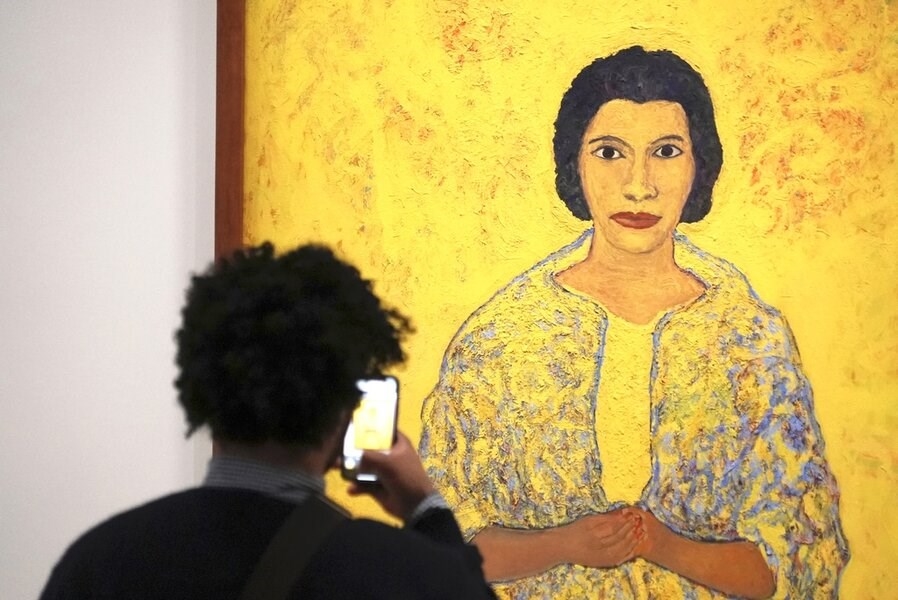REPRINTED WITH PERMISSION FROM THE CHRISTIAN SCIENCE MONITOR
An exhibit at the Centre Pompidou displays the creativity of Black artists from Africa, the Caribbean, and the United States, who flocked to the French capital after 1945 for mental liberation from stereotypes.
 A man at the Pompidou Center in Paris photographs the 1965 painting “Marian Anderson” by Beauford Delaney at an exhibition of Black artists who went to France from the 1950s to 2000.AP
A man at the Pompidou Center in Paris photographs the 1965 painting “Marian Anderson” by Beauford Delaney at an exhibition of Black artists who went to France from the 1950s to 2000.AP
When a special exhibit opened in Paris at the Pompidou Center on March 19, the visitors line was particularly long. The City of Light, it seems, is eager for an illuminating peek into its recent past: as a creative haven for Black people from either side of the Atlantic after World War II.
The museum had put together a show called “Paris Noir.” It is a collection of more than 300 works by a diaspora of talent – 150 Africans, Afro-Caribbean islanders, and African Americans. These creators were drawn to the French capital in the second half of the 20th century – a time when the city’s vibrant culture of art, literature, and music was inextricably intertwined with intense political debate and a growing social consciousness.
Many of them were from countries recently emerged or still emerging from European colonization. Many were also descendants of enslaved people. In Paris, they found a mental liberation from social and racial stereotypes or political repression in their homelands. Spanning half a century of creativity – from sculpture to magazines to poetry – the works in the exhibit are a reflection of the times, of the explosion of civil rights victories in the United States and of hard-fought independence from the West Indies to West Africa and beyond.
Many of the works were not taken seriously at the time. The exhibit, which lasts until June 30, is an overdue recognition of the artists’ contribution to Paris. It is also a reminder of freedom’s role in liberating individual expression and art’s role in the struggle for that very freedom and for equality.
While the art on display is a face to the past, the show is also a step into the future, a future of visibility and recognition. Many countries now recognize the contributions of formerly marginalized people as integral to their national lore and history. The effect of such regard can be restorative, a way to move societies forward and to show the power of creativity in breaking mental barriers.
Page created on 4/24/2025 9:34:29 AM
Last edited 4/24/2025 9:46:28 AM
